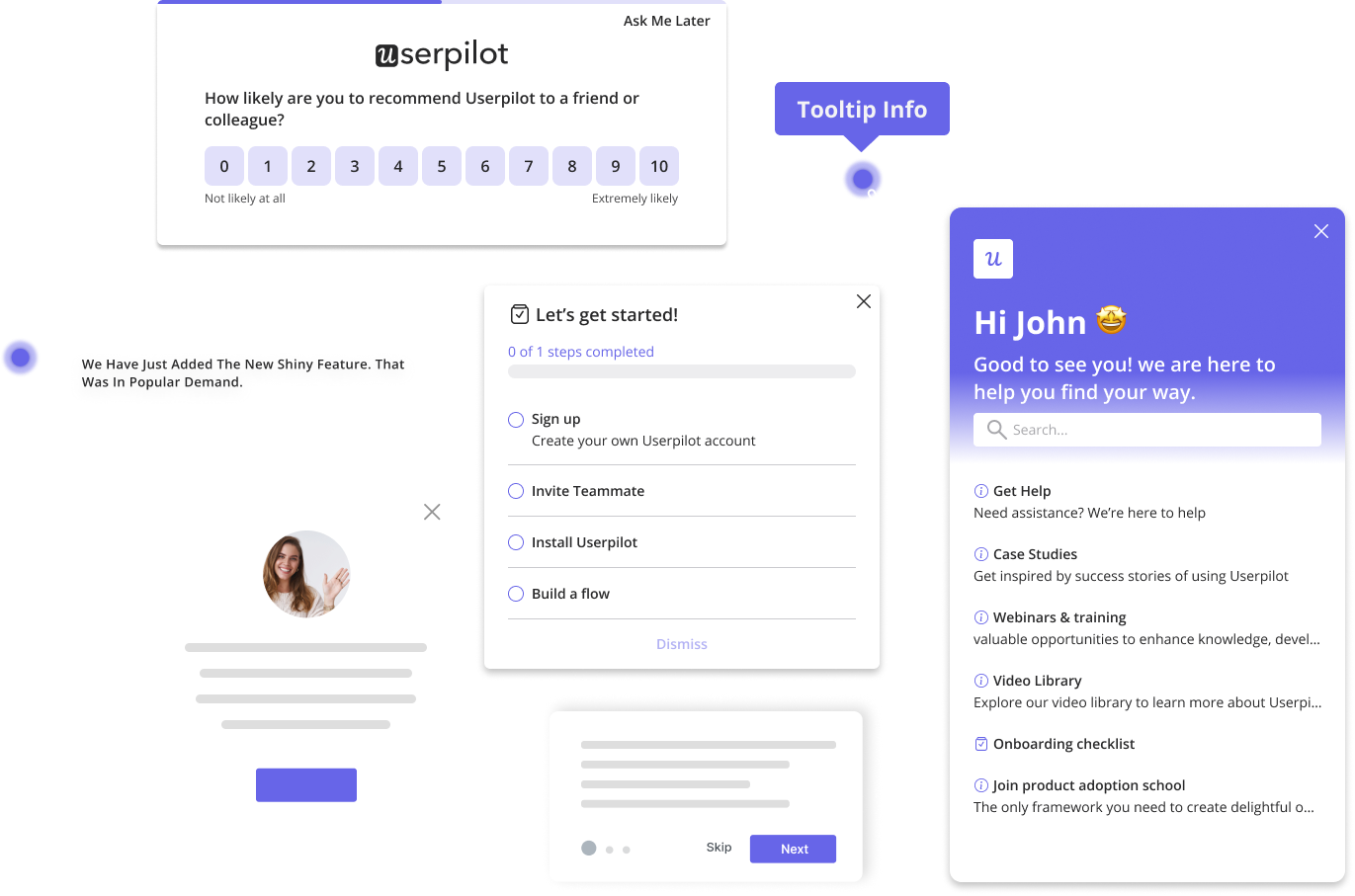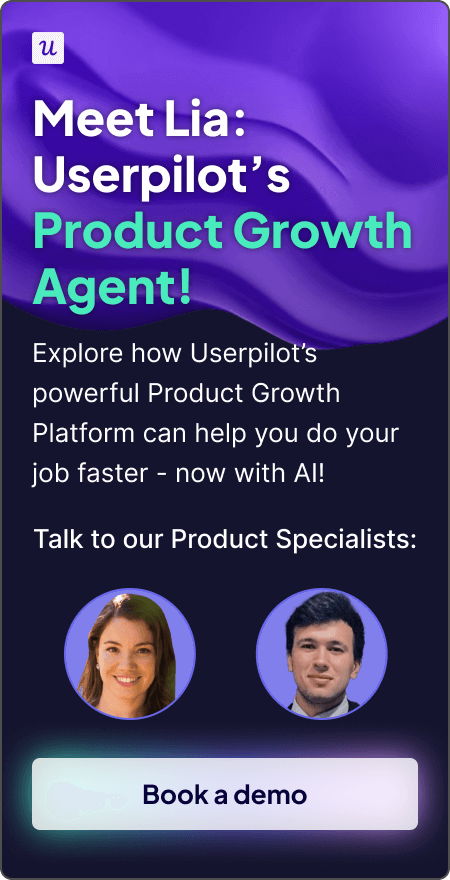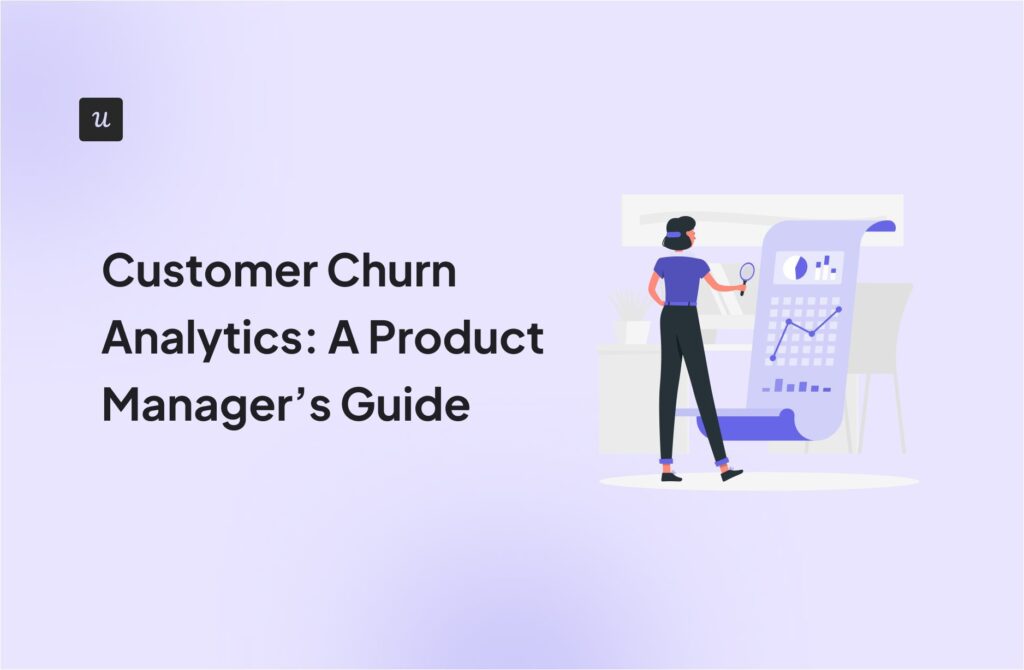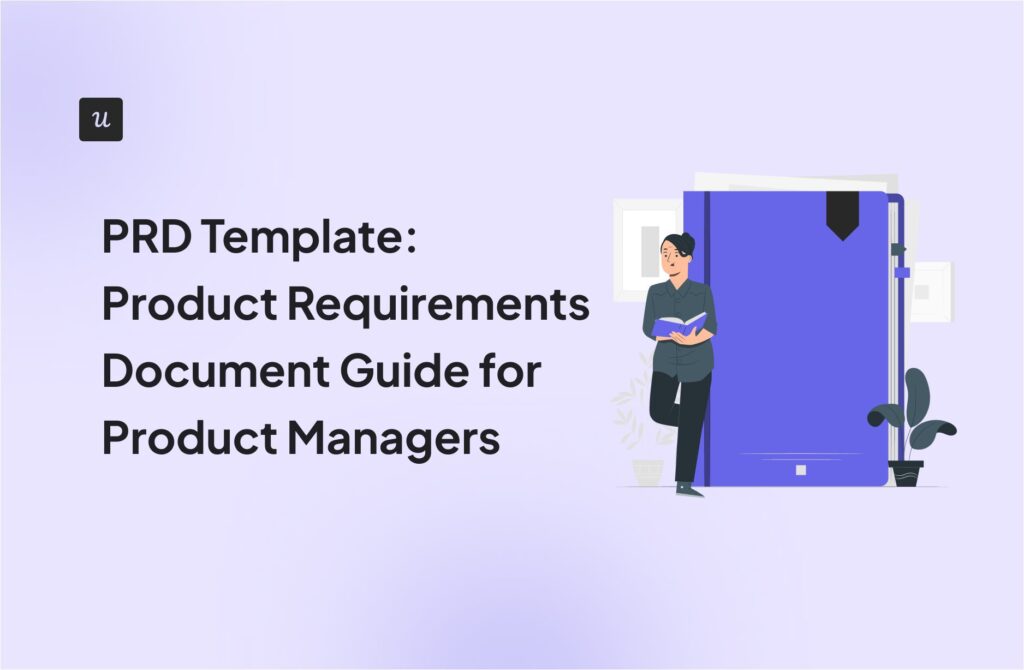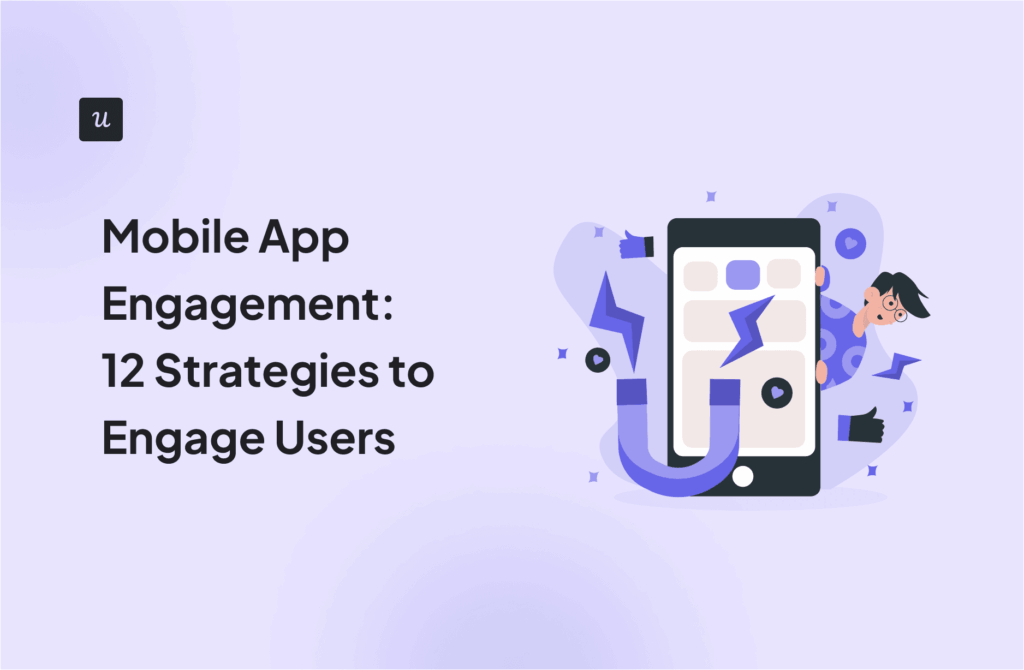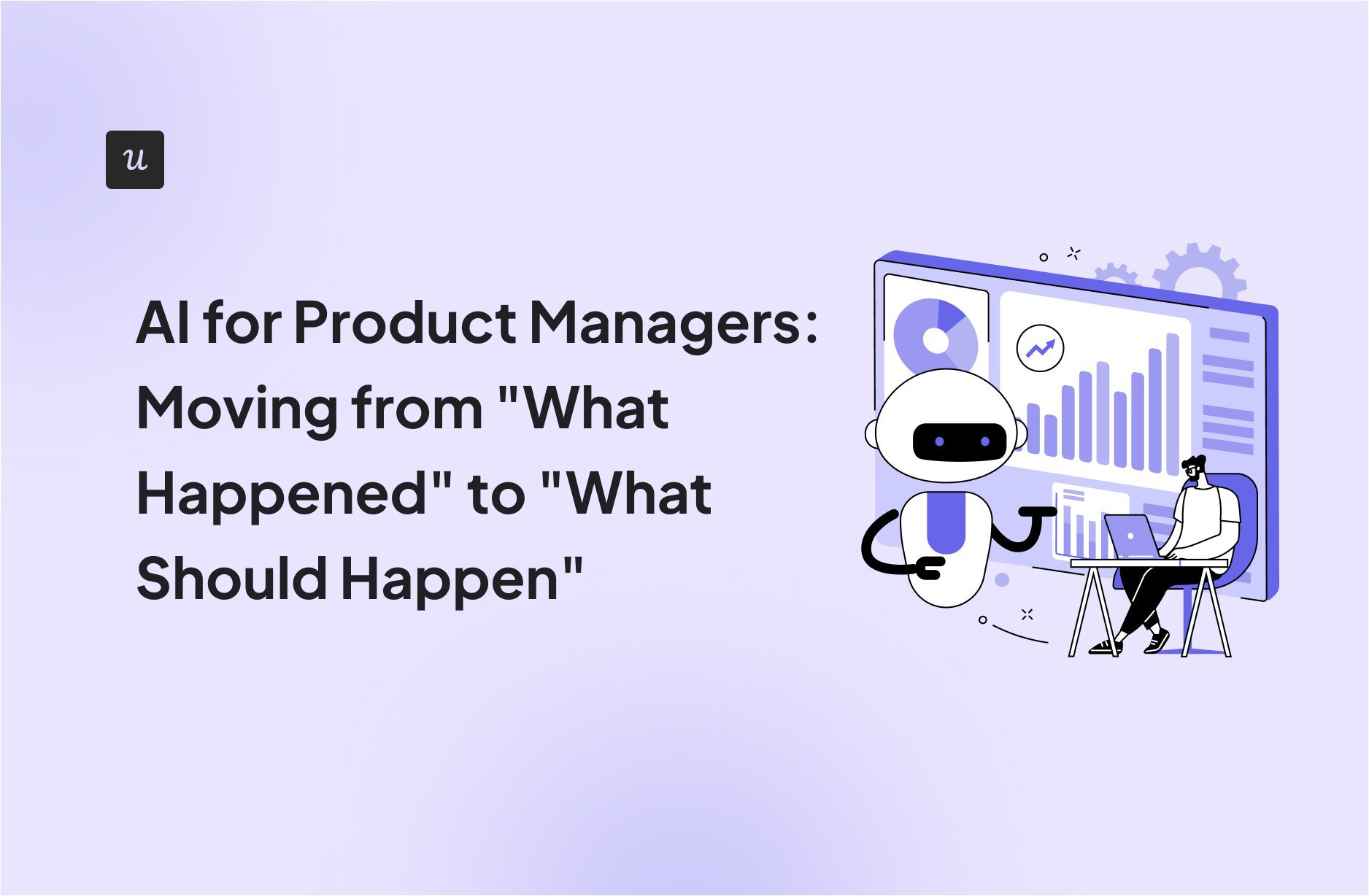
AI for Product Managers: Moving from “What Happened” to “What Should Happen”
AI for product managers wasn’t always a boardroom mandate.
In 2023, McKinsey’s State of AI showed that the technology was only starting to appear on SaaS boards’ agendas. Fast-forward a few months, and success stories are everywhere.
According to the research paper Harnessing Generative AI in Product Management:
- Walmart used AI to boost online sales by 12%.
- Spotify increased user engagement by 15%, driving a 10% rise in subscription renewals.
With early adopters seeing product success with AI, one question echoes across boardrooms and product management teams: “Why aren’t we using AI for this?”
You’re already juggling fragmented data, endless feature requests, and competing stakeholder opinions. Now, there’s mounting pressure to also become an AI expert, master new tools, champion AI for the company, and somehow fit that into your already overstretched role.
But here’s the tension: While AI feels like a lifeline, it can also be a liability. Used poorly, it leads to confusion and costly errors. Used well, it sharpens product insight.
So, how do you strike the balance?
Instead of using AI to react to results, use it to build faster, think smarter, and shape product decisions. This article will guide you.
What’s your biggest time-sink in product management?
How do you currently connect feature requests to business goals?
When a feature launches, how do you spot at-risk users?
Stop reacting, start building proactively.
AI can help you cluster feedback, remove bias from your roadmap, and predict user behavior before it impacts your metrics. Let AI for product managers handle “the doing” so you can focus on “the deciding.”
AI for Product Managers
Try Userpilot Now
See Why 1,000+ Teams Choose Userpilot
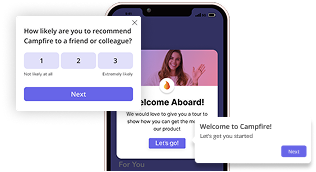
Where can AI plug into product management?
Product management today looks very different from what it did a few years ago.
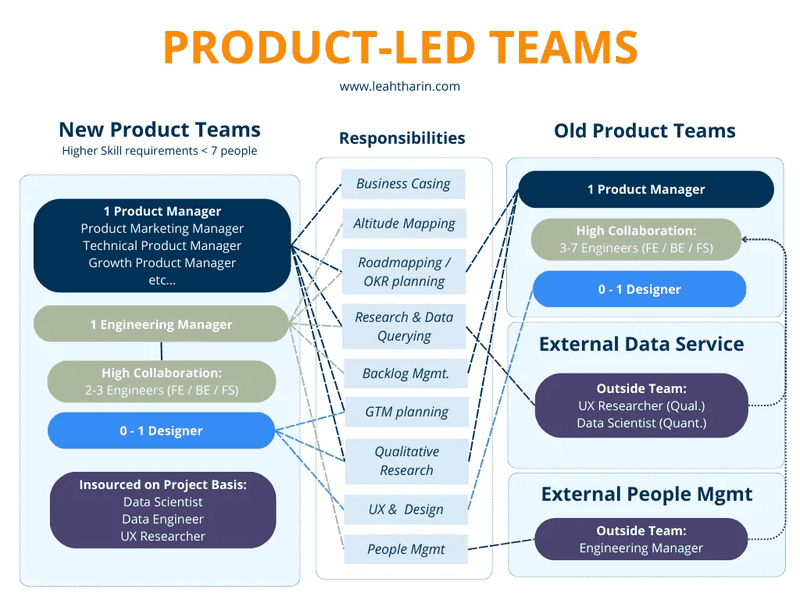
This evolution shows why AI is no longer a “nice to have.” It’s becoming essential across four key areas: research and development, roadmapping and prioritization, design and collaboration, and launch and iteration.
Below is a detailed look at how AI fits into each.
1. Research and development
You spend hours analyzing NPS responses and support tickets only to miss early churn signals hidden in long-form feedback. Mistakes happen, but in this case, they can be costly.
Here is what’s at risk:
Say just 5% of critical feedback slips through in a company with 10,000 monthly tickets. You’ll miss out on 500 insights. And each one is a potential churn trigger or lost upsell.
AI offers a solution here: instead of manual sorting, you can automatically cluster feedback by theme, analyze sentiment, and surface recurring issues. Atlassian’s case is a classic example.
Using Thematic, the Atlassian product team structured and analyzed customer feedback at scale. This resulted in 50% faster issue resolution and a more responsive organization.
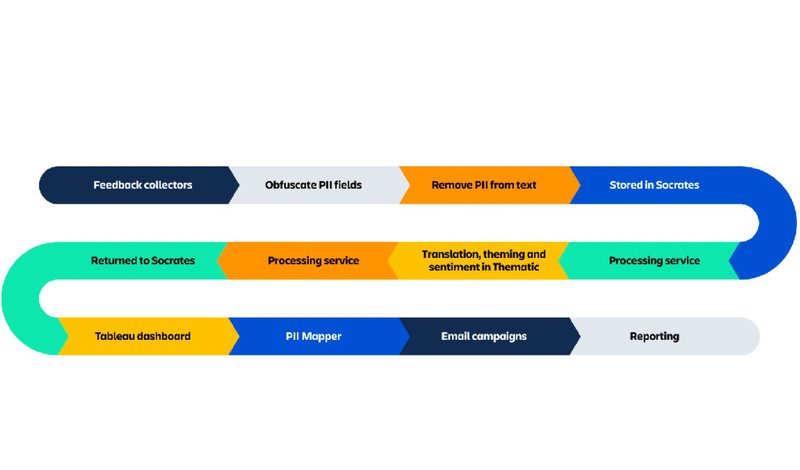
Now imagine that in your workflow: a week of spreadsheet tagging condensed into minutes of automated data analysis. The result will be faster development life cycles, sharper insights, and a product roadmap grounded in real user data.
2. Roadmapping and prioritization
Roadmaps are built on customer needs, engineering limits, business goals, and most importantly—data.
But data can easily be skewed by confirmation bias. You might find yourself looking only for insights that support your hypothesis instead of seeing the full picture.
That’s where AI product management steps in.
- It removes bias by analyzing historical adoption, feature usage, and customer sentiment objectively. However, human oversight is key to catching bias in the AI’s training data and validating its recommendations.
- Then, it simulates outcomes like, “If we ship X, retention could improve by 8%.”
Here’s what that looks like in the real SaaS world:
Say a team is weighing two features: launching a new integration or adding AI-powered reporting. The bias might lean toward the latter for feature parity with competitors. But AI could reveal that users who requested the integration have a 30% higher lifetime value, helping you prioritize confidently.
Still, there’s a tradeoff. Overfitting to numbers can make you overlook qualitative cues like customer intent or emotional friction.
The solution? Let AI uncover behavioral patterns, then validate them with context, intuition, and customer conversations.
Amplemarket is a real-world example of this balance.
They use Userpilot’s analytics to identify which product features truly drove adoption and retention. Instead of being swayed by assumptions, their team monitored, confirmed, and nurtured users through session replays, in-app surveys, and interactive walkthroughs. This led to a 10× increase in product adoption.
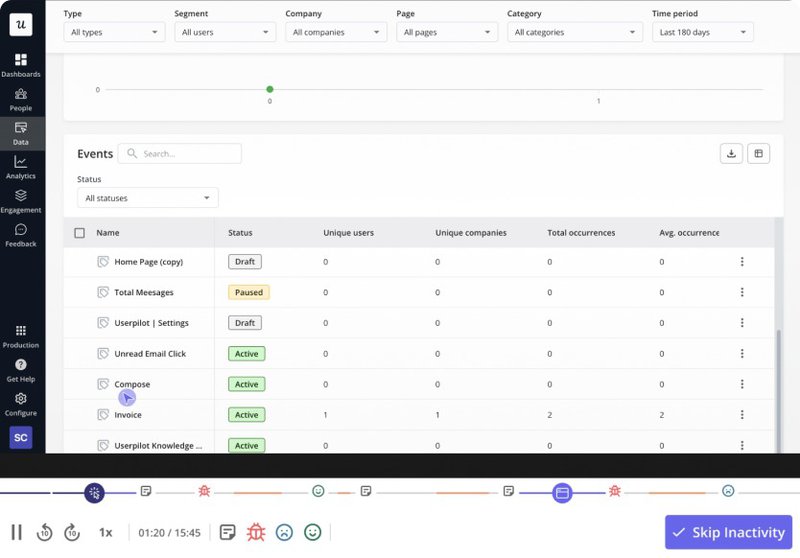
3. Design and collaboration
Design workflows are often slow because ideation takes time. Teams debate copy tone, UX flow, and visuals long before testing with real users.
AI changes that pace. It drafts UX microcopy, generates low-fidelity wireframes, and suggests onboarding flows based on behavioral data. This way, your team can test hypotheses in hours instead of weeks.
Zaha Hadid Architects (ZHA) did something similar. Adding custom AI integrations like Midjourney and Gendo into her workflow, ZHA reduced rendering time by 80% and was able to explore more creative design options more quickly.
For SaaS teams, the same applies: imagine feeding drop-off analytics into an AI model that suggests flow adjustments your whole team can review instantly. This will save days of edits and endless Slack threads.
Still, automated outputs need review. Missing tone or accessibility nuances can cause rework. So, utilize AI to ideate fast, then refine with human judgment.
4. Launch and iteration
Launches are mostly reactive: a feature goes live, you wait, then watch dashboards to see what went wrong. But that delay can cost you users, retention, and time.
Now with AI, you don’t wait; you are proactive.
AI flags drop-offs, predicts at-risk users, and recommends nudges before activation dips or churn spikes. See this:
A SaaS startup facing 20% monthly churn deployed an AI-powered retention system that analyzed usage data, support tickets, and feature engagement. The system automatically sends personalized nudges to at-risk users. In six months, churn reduced by 50% and retention went up by 30%.
In short, AI turns launches into continuous learning loops.
- Instead of asking “What happened?”, product teams can now ask “What should happen next?” and act immediately.
- Insights like “Users skipping Feature B are 40% more likely to churn—push a tooltip now” become proactive moves that shape growth rather than chase it.
All these are just the beginning of what AI can do in product management.
A glimpse into the future: AI as a product growth teammate
Imagine an AI that doesn’t stop at giving answers, but spots friction, nudges users, and streamlines decisions alongside your team. This AI is the Product Growth Agent, powered by Userpilot.
From assistant to agent
Most AI tools today operate like “Ask AI”: you input a question, and get a single answer. That’s fine for one-off tasks like generating copy or summarizing feedback.
But there’s a limitation: you can’t observe trends, coordinate across teams, or act on insights automatically.
Enter Userpilot’s Product Growth Agent. It will fix the limitation in three modes. It moves beyond being a passive assistant to an active growth partner by spotting friction, recommending fixes, and helping your team scale impact automatically.
The Product Growth Agent won’t replace your judgment; it’ll extend it, like a VA working behind the scenes to help your team scale smarter and faster.
Modes of collaboration
AI still can’t replace human judgment. But soon, you (and other product managers) will be able to decide how closely you want to work alongside it.
In the Product Growth Agent, there’ll be three collaboration modes to that effect. And here’s what to expect:
| Mode | What the Product Growth Agent will do | What you do | Hand off when… | Never outsource when… |
|---|---|---|---|---|
| Observe | Quietly tracks user behavior, surfaces trends, and flags friction points. | Interpret insights and decide what matters. | You need awareness, not automation. | Decisions require nuance or product intuition. |
| Copilot | Suggests next steps, drafts onboarding flows, or recommends nudges. | Review, refine, and approve outputs. | Tasks are repetitive and data-driven. | The decision affects brand tone or customer trust. |
| Autonomous | Executes campaigns, triggers adoption flows, or sends contextual nudges. | Set parameters and monitor results. | Outcomes are measurable and predictable. | Human context or cross-team judgment is required. |
Setting (and using) these boundaries, you’ll amplify your team’s output without losing oversight. In other words, you let AI handle “the doing” while you stay focused on “the deciding” (and exploring market trends and marketing strategies).
Example use cases that move beyond “efficiency”
Here are some quick ways to turn customer insights into action using the Product Growth Agent (soon):
- Drop-off detection → automatic flow creation
Instead of just reporting that 40% of users abandon the onboarding checklist at step three, the Agent will act. It might propose a shorter flow or even generate a new tooltip sequence on the fly to guide users past that friction point.
- Feature adoption → proactive tooltips
PMs often pore over adoption charts, then brief design and engineering to build nudges. With the Product Growth Agent, detection and action become one loop: it will spot gaps and launch engagement prompts automatically.
- Customer feedback clustering → suggested playbooks
Currently, AI can cluster pain points. The Product Growth Agent will take it further. It will connect pain points (e.g., “Users are confused about billing) to playbooks (e.g., “launch an in-app explainer flow”). This way, you’ll close the loop from insight to action without manual handoffs.
The PM skills in the new competitive world
Being a great PM won’t just be about product roadmaps, Jira tickets, or sprint planning anymore. You’ll need to champion human–AI collaboration effectively as AI begins to shape how products are built, experienced, and grown.
That means knowing when to let AI, like the Product Growth Agent, run, when to step in, and how to set the right guardrails.
Hence, you need to master a new set of skills.
- Crafting precise training prompts: Guiding AI with clear instructions so outputs align with product goals.
- Setting success criteria: Defining measurable outcomes for campaigns, flows, and engagement loops.
- Auditing AI behavior: Monitoring decisions and actions for consistency with brand standards and customer experience.
- Interpreting outcomes: Understanding why the Agent acted a certain way and refining guidance for smarter future moves.
In short, your role will shift from executing tasks to orchestrating outcomes. You’ll be defining product strategy, guiding AI actions, and interpreting signals to make faster, smarter product decisions.
AI isn’t perfect: 3 Practical challenges to consider
AI is already accelerating product management. And there’s more to come, like I showed you with Product Growth Agent’s use cases.
However, AI isn’t a silver bullet. Before handing off too much control, pause and ask: What could go wrong if we’re not intentional?
Here are three more questions every PM should be asking right now:
1. Can you trust the data feeding your AI?
AI doesn’t fix bad data; it’s only going to multiply it.
For example, if your event tracking is sloppy, surveys are biased, or taxonomy is inconsistent, AI will confidently double down on those bad assumptions. This will only lead to poor prioritization and wasted dev cycles.
So before you bring AI into the stack, make sure your data hygiene process is well-defined and trustworthy. Otherwise, you’re just training AI to make mistakes faster.
2. Do you have the “Frankenstein” stack problem?
Do you patch together disconnected tools (one for product analytics, one for onboarding, one for feedback) and expect them to work in harmony?
That’s a “Frankenstein” stack, a problem shared by most teams. PMs and other knowledge workers juggle 8.8 apps weekly, leading to scattered context and siloed data.
That’s the problem we’re building Product Growth Agent to fix. Fully integrated, it’ll connect insights, actions, and feedback loops in one system.
3. Who takes the blame when AI messes up?
When AI nudges a user the wrong way or prioritizes the wrong feature, accountability still lands on you, the PM.
AI can recognize user activity patterns, but it doesn’t own outcomes. You do.
That’s why human oversight, ethical guidelines, and clear decision boundaries are crucial. Before deploying AI at scale, define who monitors its behavior, reviews its choices, and owns the final call.
💡 Bottom line: AI will only ever be as smart, accurate, and ethical as the system and people it serves.
How to experiment with artificial intelligence as a PM
While AI’s potential in product management is massive, you don’t have to overhaul your workflow overnight. Start small, stay curious, and treat the process like an experiment.
Do it in 4 steps:
Start small with one repetitive task
Pick one task that drains your energy, like combing through 200 support tickets, writing endless release note drafts, or sorting feature requests, and hand it off to AI.
Then, watch closely and answer these questions:
- Did AI actually save you time?
- Did it understand context or just mimic patterns?
- What parts did you still need to fix?
Start where failure is low-stakes but insight is high, like summarizing customer feedback, generating onboarding tooltips, or tagging feature requests by sentiment.
The goal here isn’t perfection. You’re learning how AI interprets nuance, how much oversight it needs, and where it adds (or quietly drains) value.
Compare AI vs. human output
Don’t test AI in isolation. Give it the same input you’d give yourself or your team: same brief, same context, same constraints. And then compare the results side by side.
Here’s a sample comparison table to get you started:
| Prompt | Human output | AI output |
|---|---|---|
| Write a 1-line compelling product vision for a new productivity app. | “Help remote teams stay aligned and productive.” | “Turn distance into strength with tools that keep remote teams connected and focused.” |
| Write a 1-line product strategy for a SaaS tool in a crowded market. | “Improve UX and prioritize features customers ask for.” | “Win through simplicity; use data to spot friction, prioritize impact, and scale fast.” |
| [Add your next test here] | ||
| [Add your next test here] | ||
| [Add your next test here] |
Now, use the table to answer:
- Where does AI surprise you with speed, clarity, or unexpected insights?
- Where does it miss context, flatten nuance, or invent details?
Treat this like an A/B test for product management processes, not just performance.
The goal here is to learn how AI thinks differently, what quality gaps exist, and what kind of direction or data it needs to consistently meet your team’s standards.
Make the team part of the experiment
Drop the AI draft in front of design, engineering, or customer success and ask: Would you ship this?
Then gauge your team’s reactions. What do they question, challenge, or approve? Use the feedback to refine your prompts and test again.
At this stage, AI becomes a conversation starter. It sparks debates about tone, UX, prioritization, and what “good” really means.
The biggest win here isn’t the output itself but the friction it creates. The discussions reveal how your team defines quality, where automation fits, and how much creative or strategic control they’re willing to share.
Define ROI before you scale
Many PMs feel pressured to “integrate AI” without proof that it actually saves time, improves accuracy, or boosts adoption. That’s a trap.
Before scaling any use case, define what success means to your team. Is it clearer insights, fewer churned users, or more engaged users?
Then, set your baseline metrics early and decide how you’ll measure improvement after each experiment. For example, if your goal is fewer churned users, track churn rate before and after AI deployment to confirm it’s actually improving retention.
💡 What if you can’t measure impact?
Then, there’s no innovation. You’re just wasting money on expensive tools that could’ve been used to reduce churn.
So, where does this leave product managers?
AI isn’t replacing you. But it’s already redefining how PMs work, from faster discovery cycles like Atlassian’s to smarter prioritization like Amplemarket’s.
So, don’t just join the train, be in the front row. Pair your judgment with AI insight to ship faster and make smarter product decisions.
Tools like Userpilot’s upcoming Product Growth Agent will help even further. It will be a unified system that turns customer data, actions, and feedback into one intelligent loop.
If you want to be ready when it launches, now’s the time to start experimenting. Build your data hygiene, test workflows, and learn how to leverage AI for product development practices.
FAQ
What is an AI product manager?
An AI product manager builds and operates products or features powered by machine learning and generative AI. Unlike typical PMs, they define data requirements, translate model capabilities into user value, and manage model risk.

